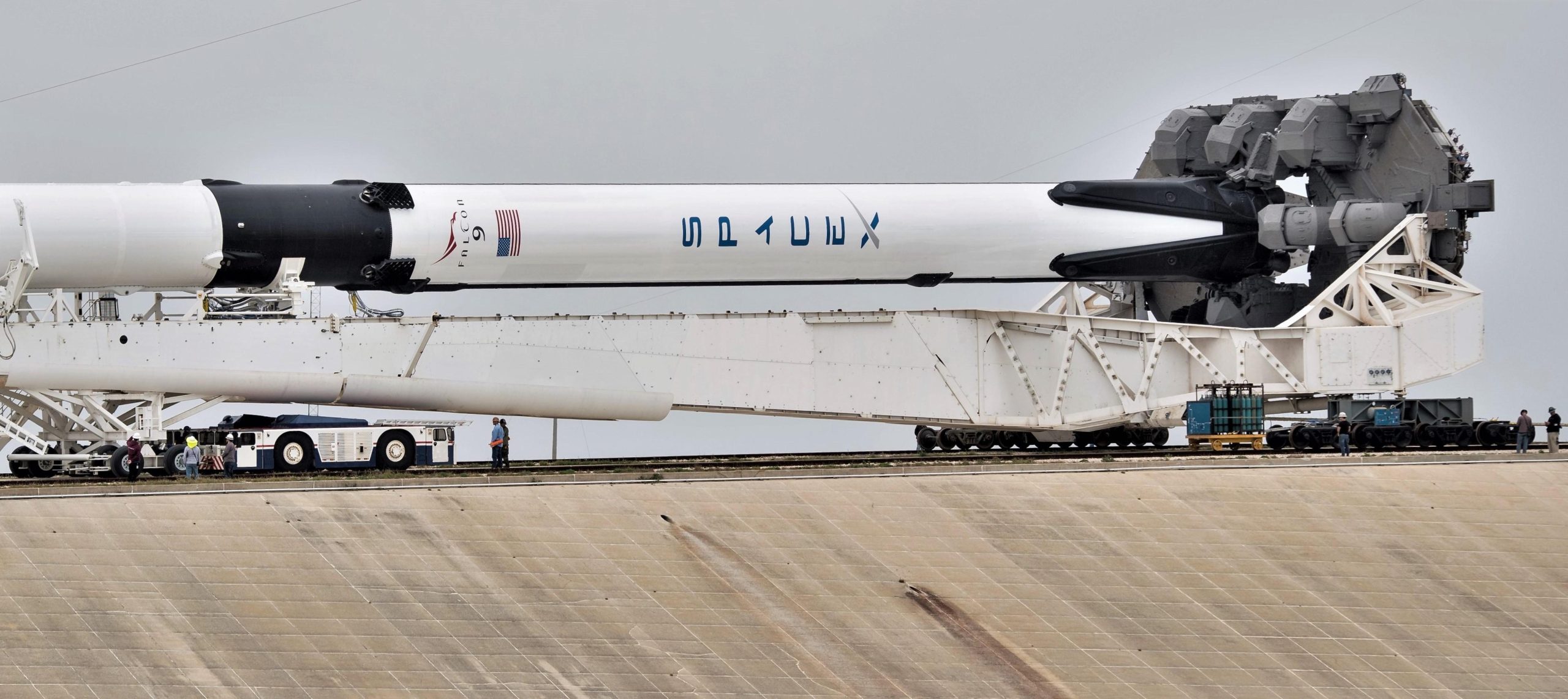
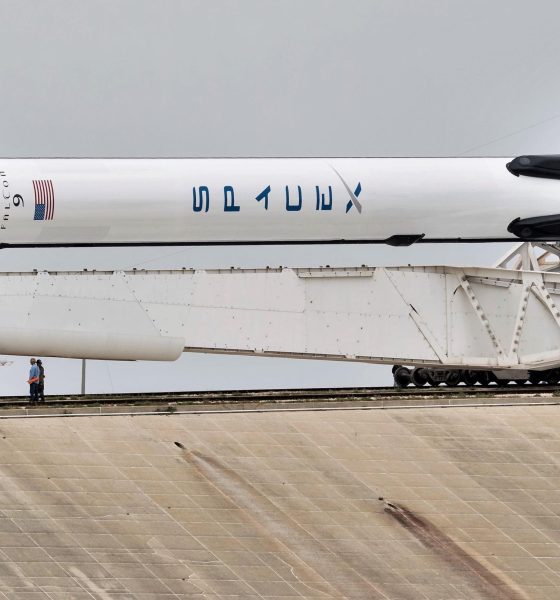
News
SpaceX teases extreme Falcon 9 launch cadence goals in Starship planning doc
Published as part of an August 2019 environmental assessment (EA) draft for Starship’s prospective Pad 39A launch facilities, SpaceX revealed plans for a truly mindboggling number of annual Falcon 9 and Falcon Heavy launches by 2024.
As environmental planning documents, the figures should be taken with a large grain of salt and be treated as near-absolute ceilings rather than practical goals. Nevertheless, SpaceX revealed plans for its two Florida launch sites (LC-40 and LC-39A) to ultimately support as many as 70 annual launches of Falcon 9 and Heavy by 2024, less than five years from now.
Simply put, even the most dogmatic fan would have to balk at least a little bit at the numbers SpaceX suggested in its Starship EA draft. More specifically, SpaceX apparently has plans to support as many as 20 annual Falcon 9/Heavy launches from Pad 39A and an incredible 50 annual Falcon 9 launches from LC-40 as early as 2024.
“SpaceX plans to increase the Falcon launch frequency to 20 launches per year from LC-39A and up to 50 launches per year from LC-40 by the year 2024. However, as Starship/Super Heavy launches gradually increase to 24 launches per year, the number of launches of the Falcon would decrease.“
–SpaceX, Starship Environmental Assessment Draft, August 2019

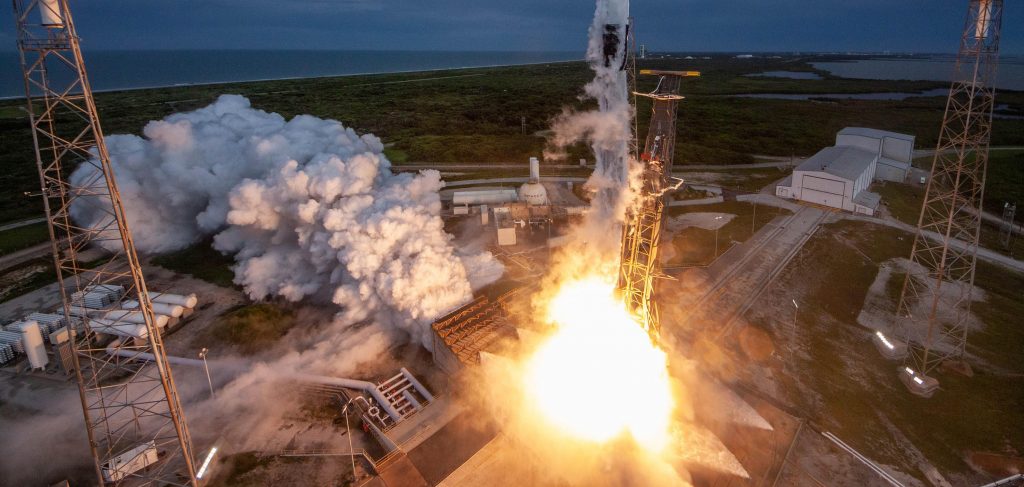
Two obvious options
Given just how significant of an increase a 70-launch annual cadence would be for SpaceX relative to their current record of 21 launches, it’s entirely possible that these numbers are really just a pipe dream included in a pending environmental assessment to hedge bets just in case a similar launch frequency is achieved over the next five years.
On the other hand, it’s possible that SpaceX – just now coming into the ability to reliably achieve a much higher cadence – has coincidentally become payload-constrained at almost the same time, meaning that the company’s customers’ payloads just aren’t ready for launch. This would explain, for example, why SpaceX has only launched 10 times this year when the company had already completed 15 launches by August 2018.
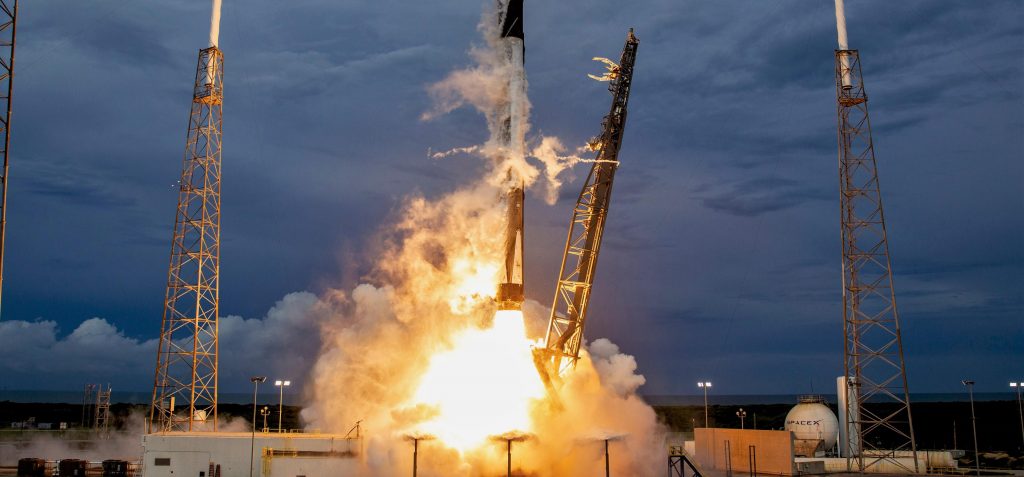
Additionally, it can be almost unequivocally assumed that all but 15-20 of those supposed 70 annual launches would come from SpaceX’s own internal demand for Starlink launch capacity. Assuming no improvements between now and 2024, 50 Falcon 9 launches could place as many as 3000 Starlink satellites in orbit in a single year, equivalent to more than 25% of the entire proposed ~11,800-satellite constellation.
Barring regulatory changes to US Federal Communications Commission (FCC) and International Telecommunication Union (ITU) requirements, SpaceX must launch at least half of all Starlink satellites (~5900) by November 2024 and finish launching the remaining ~5900 by November 2027. If SpaceX fails to reach those deployment milestones, the company runs the risk of losing Starlink’s domestic and international licenses to operate.
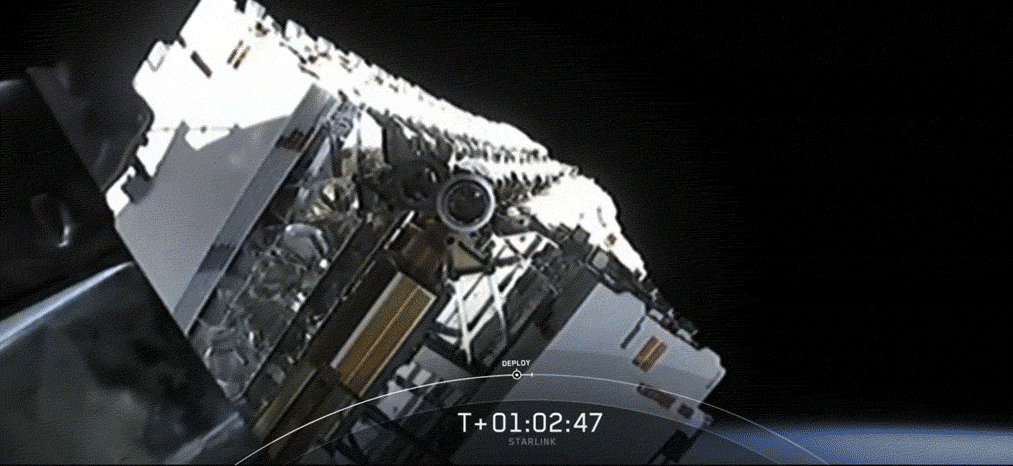
This would help to explain why SpaceX says that it’s planning to reach a maximum cadence of 70 annual launches “by 2024”, given that 2024 will be a pivotal year in the eyes of regulations currently in effect for Starlink.
Starship confusion
As noted in the quote above, SpaceX plans to eventually phase out Falcon 9 and Heavy launches as the company’s next-generation Starship and Super Heavy launch vehicle gradually comes online, proves itself reliable, and begins operational launch activities. According to SpaceX, given just how much mass Starship can nominally launch relative to both Falcon 9 and Heavy, far fewer launches will be needed to accomplish the tasks that would otherwise require several times more launches of SpaceX’s smaller vehicles.
SpaceX’s initial Environmental Assessment for Starship launches from Pad 39A caps the rocket’s maximum cadence at 24 annual launches. Oddly, this directly contradicts the goals set for Starship (formerly BFR) by CEO Elon Musk and SpaceX more generally. By building a launch vehicle that is fully and rapidly reusable, the goal has long been to deliver cheap, aircraft-like access to orbit at a completely unprecedented scale.
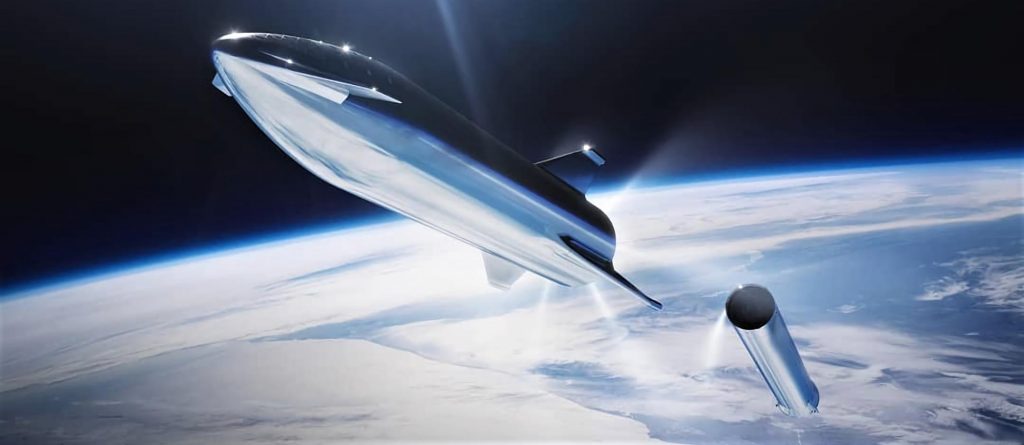
This would technically mean that SpaceX could actually dramatically increase its launch cadence without increasing costs, allowing the company to perform currently nonsensical missions where Starship might launch payloads weighing just 5-10% of its total payload capacity. Airline operations routinely do things of a similar nature, sometimes flying just a fraction of their maximum passenger load to destinations for a variety of reasons.
Additionally, SpaceX has consistently indicated that Starship will rely heavily on orbital refueling to accomplish its ultimate deep space ambitions. Previous presentations from Elon Musk have shown that launches to the Mars or Moon with significant payload would require no fewer than five separate tanker launches and orbital refuelings, all of which would classify as one of the 24 annual launches SpaceX has described in its August 2019 EA draft. On their own, launching two Starships to Mars with 100 tons of payload each would require no fewer than 10-12 launches.

Ultimately, it’s unwise to draw any substantial conclusions from an Environmental Assessment like the one the above information has been taken from. This 39A-specific EA also ignores the possibility of a similar launch facility being developed in Boca Chica, Texas, which SpaceX explicitly acknowledges.
This particular draft is also the first Starship-related EA ever filed by SpaceX, and the company may thus be treating it more as a bare minimum with the intention of eventually pursuing far more ambitious launch rates once Starship has been established.
Check out Teslarati’s Marketplace! We offer Tesla accessories, including for the Tesla Cybertruck and Tesla Model 3.

News
Tesla stands to win big from potential adjustment to autonomous vehicle limitations
Enabling scale, innovation, and profitability in a sector that is growing quickly would benefit Tesla significantly, especially as it has established itself as a leader.

Tesla stands to be a big winner from a potential easing of limitations on autonomous vehicle development, as the United States government could back off from the restrictions placed on companies developing self-driving car programs.
The U.S. House Energy and Commerce subcommittee will hold a hearing later this month that will aim to accelerate the deployment of autonomous vehicles. There are several key proposals that could impact the development of self-driving cars and potentially accelerate the deployment of this technology across the country.
These key proposals include raising the NHTSA’s exemption cap from 2,500 to 90,000 vehicles per year per automaker, preempting state-level regulations on autonomous vehicle systems, and mandating NHTSA guidelines for calibrating advanced driver assistance systems (ADAS).
Congress, to this point, has been divided on AV rules, with past bills like the 2017 House-passed measure stalling in the Senate. Recent pushes come from automakers urging the Trump administration to act faster amid competition from Chinese companies.
Companies like Tesla, who launched a Robotaxi service in Austin and the Bay Area last year, and Alphabet’s Waymo are highlighted as potential beneficiaries from lighter sanctions on AV development.
The NHTSA recently pledged to adopt a quicker exemption review for autonomous vehicle companies, and supporters of self-driving tech argue this will boost U.S. innovation, while critics are concerned about safety and job risks.
How Tesla Could Benefit from the Proposed Legislation
Tesla, under CEO Elon Musk’s leadership, has positioned itself as a pioneer in autonomous driving technology with its Full Self-Driving software and ambitious Robotaxi plans, including the Cybercab, which was unveiled in late 2024.
The draft legislation under consideration by the U.S. House subcommittee could provide Tesla with significant advantages, potentially transforming its operational and financial landscape.
NHTSA Exemption Cap Increase
First, the proposed increase in the NHTSA exemption cap from 2,500 to 90,000 vehicles annually would allow Tesla to scale up development dramatically.
Currently, regulatory hurdles limit how many fully autonomous vehicles can hit the roads without exhaustive approvals. For Tesla, this means accelerating the rollout of its robotaxi fleet, which Musk envisions as a network of millions of vehicles generating recurring revenue through ride-hailing. With Tesla’s vast existing fleet of over 6 million vehicles equipped with FSD hardware, a higher cap could enable rapid conversion and deployment, turning parked cars into profit centers overnight.
Preempting State Regulations
A united Federal framework would be created if it could preempt State regulations, eliminating the patchwork of rules that currently complicate interstate operations. Tesla has faced scrutiny and restrictions in states like California, especially as it has faced harsh criticism through imposed testing limits.
A federal override of State-level rules would reduce legal battles, compliance costs, and delays, allowing Tesla to expand services nationwide more seamlessly.
This is crucial for Tesla’s growth strategy, as it operates in multiple markets and aims for a coast-to-coast Robotaxi network, competing directly with Waymo’s city-specific expansions.
Bringing Safety Standards to the Present Day
Innovation in the passenger transportation sector has continued to outpace both State and Federal-level legislation, which has caused a lag in the development of many things, most notably, self-driving technology.
Updating these outdated safety standards, especially waiving requirements for steering wheels or mirrors, directly benefits Tesla’s innovative designs. Tesla wanted to ship Cybertruck without side mirrors, but Federal regulations required the company to equip the pickup with them.
Cybercab is also planned to be released without a steering wheel or pedals, and is tailored for full autonomy, but current rules would mandate human-ready features.
Streamlined NHTSA reviews would further expedite approvals, addressing Tesla’s complaints about bureaucratic slowdowns. In a letter written in June to the Trump Administration, automakers, including Tesla, urged faster action, and this legislation could deliver it.
In Summary
This legislation represents a potential regulatory tailwind for Tesla, but it still relies on the government to put forth action to make things easier from a regulatory perspective. Enabling scale, innovation, and profitability in a sector that is growing quickly would benefit Tesla significantly, especially as it has established itself as a leader.
News
Nvidia CEO Jensen Huang explains difference between Tesla FSD and Alpamayo
“Tesla’s FSD stack is completely world-class,” the Nvidia CEO said.

NVIDIA CEO Jensen Huang has offered high praise for Tesla’s Full Self-Driving (FSD) system during a Q&A at CES 2026, calling it “world-class” and “state-of-the-art” in design, training, and performance.
More importantly, he also shared some insights about the key differences between FSD and Nvidia’s recently announced Alpamayo system.
Jensen Huang’s praise for Tesla FSD
Nvidia made headlines at CES following its announcement of Alpamayo, which uses artificial intelligence to accelerate the development of autonomous driving solutions. Due to its focus on AI, many started speculating that Alpamayo would be a direct rival to FSD. This was somewhat addressed by Elon Musk, who predicted that “they will find that it’s easy to get to 99% and then super hard to solve the long tail of the distribution.”
During his Q&A, Nvidia CEO Jensen Huang was asked about the difference between FSD and Alpamayo. His response was extensive:
“Tesla’s FSD stack is completely world-class. They’ve been working on it for quite some time. It’s world-class not only in the number of miles it’s accumulated, but in the way it’s designed, the way they do training, data collection, curation, synthetic data generation, and all of their simulation technologies.
“Of course, the latest generation is end-to-end Full Self-Driving—meaning it’s one large model trained end to end. And so… Elon’s AD system is, in every way, 100% state-of-the-art. I’m really quite impressed by the technology. I have it, and I drive it in our house, and it works incredibly well,” the Nvidia CEO said.
Nvidia’s platform approach vs Tesla’s integration
Huang also stated that Nvidia’s Alpamayo system was built around a fundamentally different philosophy from Tesla’s. Rather than developing self-driving cars itself, Nvidia supplies the full autonomous technology stack for other companies to use.
“Nvidia doesn’t build self-driving cars. We build the full stack so others can,” Huang said, explaining that Nvidia provides separate systems for training, simulation, and in-vehicle computing, all supported by shared software.
He added that customers can adopt as much or as little of the platform as they need, noting that Nvidia works across the industry, including with Tesla on training systems and companies like Waymo, XPeng, and Nuro on vehicle computing.
“So our system is really quite pervasive because we’re a technology platform provider. That’s the primary difference. There’s no question in our mind that, of the billion cars on the road today, in another 10 years’ time, hundreds of millions of them will have great autonomous capability. This is likely one of the largest, fastest-growing technology industries over the next decade.”
He also emphasized Nvidia’s open approach, saying the company open-sources its models and helps partners train their own systems. “We’re not a self-driving car company. We’re enabling the autonomous industry,” Huang said.
Elon Musk
Elon Musk confirms xAI’s purchase of five 380 MW natural gas turbines
The deal, which was confirmed by Musk on X, highlights xAI’s effort to aggressively scale its operations.

xAI, Elon Musk’s artificial intelligence startup, has purchased five additional 380 MW natural gas turbines from South Korea’s Doosan Enerbility to power its growing supercomputer clusters.
The deal, which was confirmed by Musk on X, highlights xAI’s effort to aggressively scale its operations.
xAI’s turbine deal details
News of xAI’s new turbines was shared on social media platform X, with user @SemiAnalysis_ stating that the turbines were produced by South Korea’s Doosan Enerbility. As noted in an Asian Business Daily report, Doosan Enerbility announced last October that it signed a contract to supply two 380 MW gas turbines for a major U.S. tech company. Doosan later noted in December that it secured an order for three more 380 MW gas turbines.
As per the X user, the gas turbines would power an additional 600,000+ GB200 NVL72 equivalent size cluster. This should make xAI’s facilities among the largest in the world. In a reply, Elon Musk confirmed that xAI did purchase the turbines. “True,” Musk wrote in a post on X.
xAI’s ambitions
Recent reports have indicated that xAI closed an upsized $20 billion Series E funding round, exceeding the initial $15 billion target to fuel rapid infrastructure scaling and AI product development. The funding, as per the AI startup, “will accelerate our world-leading infrastructure buildout, enable the rapid development and deployment of transformative AI products.”
The company also teased the rollout of its upcoming frontier AI model. “Looking ahead, Grok 5 is currently in training, and we are focused on launching innovative new consumer and enterprise products that harness the power of Grok, Colossus, and 𝕏 to transform how we live, work, and play,” xAI wrote in a post on its website.








